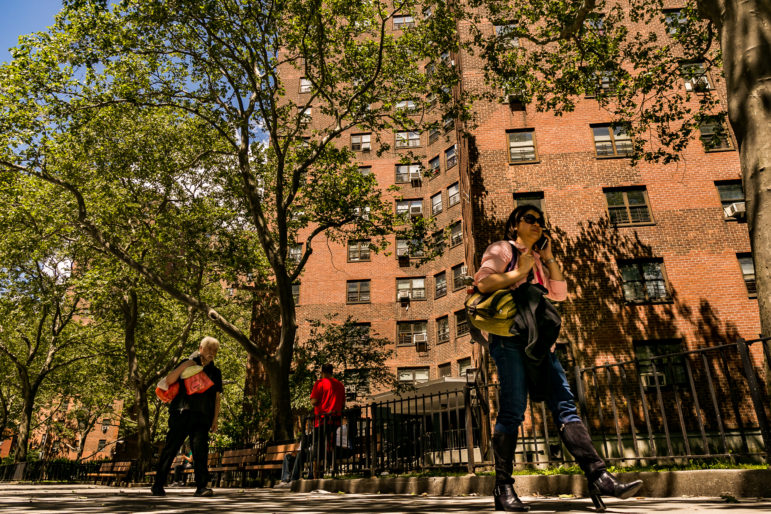
Adi Talwar
NYCHA’s LaGuardia Houses in the lower East side section of Manhattan.
Years of mismanagement and chronic under investment coming to bear. Crumbling infrastructure becoming harder and harder to ignore. If the challenges the New York City Housing Authority (NYCHA) is facing now sound familiar, it’s because we’ve been through this before. It was only a few short months ago that the MTA was facing down a similar set of circumstances.
And yet, no one called to #AbolishMTA, and no one suggested we tear it all down and start fresh. New Yorkers knew there wasn’t an alternative, so we rallied behind the system and government took action to save the subways. They put together a capital program that promised to invest $33.9 billion dollars in repairs and enhancements, and new management was brought in to make changes to the system in order to improve the agency.
With headline after headline containing revelations of mold, crumbling infrastructure, a failure to address lead exposure risks, and general agency mismanagement, NYCHA is undoubtedly in serious trouble. The conditions forced upon the residents of public housing are unacceptable. Yet the media, instead of pushing to save the buildings that house 400,000 New Yorkers, has begun calling to abolish NYCHA. An editorial has even gone so far as to suggest knocking down the towers that have been a part of New York City’s skyline since the 1930s.
United Neighborhood Houses of New York (UNH) represents New York City’s settlement houses who have been partners with the public housing movement here since the very first brick was laid. Council Member Ampry-Samuel, as Chair of the Public Housing Committee, has pushed to ensure the voices of public housing residents are heard as we work to address the crisis unraveling at NYCHA. Together, we reject this developing narrative. The bottom line is that the challenges faced by NYCHA today are the result of decades of chronic under-investment.
The best solution is the most obvious one: Start investing in public housing again.
Whether through creation of new revenue streams, cost savings and efficiencies or better system-wide management, this means creating real and serious investments that will improve the quality of living for each NYCHA resident not just for now but also for the future.
Though the cost of the repairs is high, inaction would prove to be far more costly. Without alternatives, displaced NYCHA residents would either have to flee the city or face homelessness. New York City’s homelessness crisis, already at historic highs, would become much worse almost overnight, and the money we failed to invest in saving NYCHA now would end up spent on emergency crisis services and high shelter fees that were entirely avoidable.
There are no practical alternatives to saving NYCHA.
While some have suggested we can rely on Section 8 housing vouchers or mixed-income housing as stop-gaps should our public housing stock continue to deteriorate, these programs are ill-equipped to serve NYCHA’s 400,000 residents.
Section 8 voucher holders are able to rent apartments in the private market and continue paying only 30 percent of their income towards rent, just like NYCHA rent regulations. That said, those vouchers have stringent requirements. They can only be used on apartments that meet HUD’s “fair market rent” standards. In NYC, HUD says the “fair market rent” for a one bedroom is for $1,558 / month or less. The median asking price for a one-bedroom rental in New York last year was $2,870.
Mixed-income developments aren’t any better, with “affordable” units relying on an “affordability” metric called the Area Median Income (AMI). AMI is based on the incomes of all of New York City (with surrounding, wealthier counties like Westchester, Putnam, and Rockland thrown in for good measure). An outsize number of NYCHA residents fall into the “Extremely Low Income” AMI category, the category for which private developers tend to offer the fewest number of units. Most “affordable” units fall into the 60 percent or 80 percent of AMI categories ($56,340 and $75,120 annual income for families of three respectively). The average NYCHA tenant who is currently paying approximately $500/month in rent would face lotteries where, in 2016, 2.54 million applications were submitted for 2,628 units, and the numbers are even worse for the “Extremely Low Income” category units that a majority of NYCHA’s tenants would require.
The only realistic solution is to #SaveNYCHA.
As Chair of the Public Housing Committee of the New York City Council and representative of New York City’s settlement houses, many of whom are embedded in NYCHA buildings and have worked to realize the vision of public housing since the very beginning, we will be exploring every conceivable avenue to see this goal accomplished.
Public housing is a symbol of what makes New York City great – that we value diversity and opportunity, and that we believe in housing as a human right. Now is the time to reaffirm our commitment to those beliefs. We made a promise to the poor and working-class of New York City when we built the first towers in 1930. We must uphold that promise.
Council Member Alicka Ampry-Samuel represents the 41st District in Brooklyn and is the Chair of the Public Housing Committee. Susan Stamler is the Executive Director of United Neighborhood Houses, the membership organization for New York City’s settlement houses.


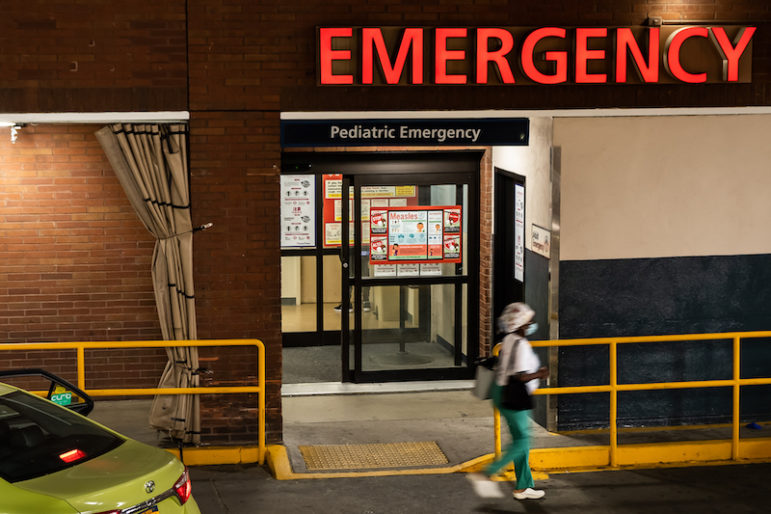
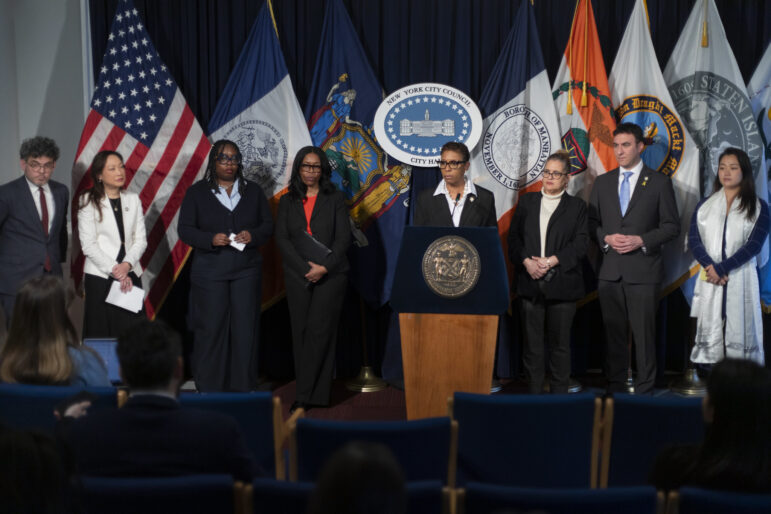
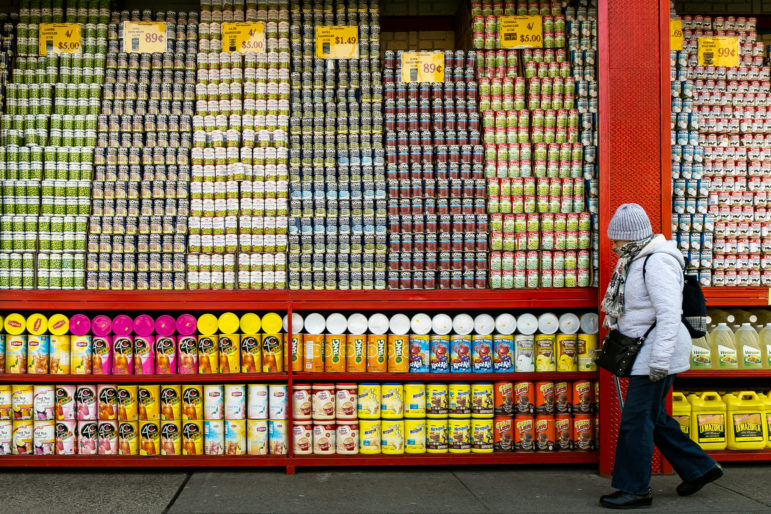
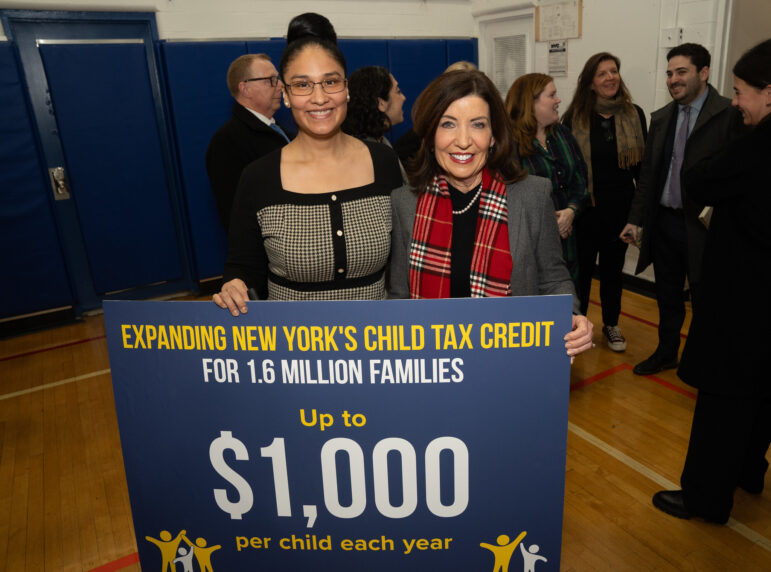


8 thoughts on “CityViews: Abolish NYCHA? No Way!”
Upholding the first commitment is essential to the well being of the not so rich people of New York City. I believe if the people in charge care a little for the people involve it makes the much needed commitment easier.
Public housing is and has been essential to family stabilization and upward mobility. In our attempts to address income inequality, the ability of people to hold jobs, purse educational opportunities and not fall into indigence has been one of the resounding successes of public housing.
Like it or not NYCHA will be either completely reorganized or abolished because it does not make any sense to spend huge money for something that is so unprofessionally managed and financially unsustainable.
Did anybody calculated how much money taxpayers spent per square foot on NYCHA and compared to luxury condos in Manhattan? Until NYCHA start work for profit or at least balance the budget it will be lead by unprofessional management.
“Sstart investing in public housing again” this code for “Impose huge tax increases on New York city residents and then embezzle the money and damn the housing”.
Disinvestment is not the only cause of all of these problems. Massive corruption within the NYCHA, kickbacks, union bribes and payoffs, lazy incompetent government workers and bad tenants who destroy the buildings play a much bigger role in the failure of these buildings.
It makes NO sense to put money into these old outdated brick tenements, it would be far better to build new buildings using modern building methods, move people out of the old buildings and into the new ones, tear down the old and then build more new in their place.
There is nothing historical about slum housing that was nothing great when it was built 70 years ago. Public private partnerships are the only way to go these days, taxpayers should not be on the hook to pay for someone’s housing. Plus there needs to be serious changes to public housing policy, such as work requirements, time limits and no tolerance policies for criminal or anti social behaviors.
Do You Live Here????? because we pay taxes so please stop and think
Buddy if you don’t live here your opinion means NOTHING
WE ARE TAX PAYERS
DO MORE RESEARCH ON THE FAMILIES OF PUBLIC HOUSING WE ARE NOT CRIMINALS WE ARE PROFESSIONALS HARD WORKING TAX PAYERS BUSINESS OWNERS AND THOSE ON FIXED INCOMES AS THEY SHOULD BE PERIOD
Pingback: City Streets Become Slaughter Houses, School Buses Still A Mess, Brooklyn Diocese Sex Abuse, BQX, and more links. - BKLYNER
I cannot follow the comparison between NYCHA and the MTA. The MTA oversees transportation, NYCHA oversees housing. Every day that NYCHA is mismanaged, its residents are continuously subjected to dangerous conditions. Although the MTA does manage safety concerns, minimizing the tremendous impact that NYCHA’s mismanagement has on its residents recklessly minimizes a key distinction between these two governmental agencies. NYCHA is in charge of a key component of its residents’ lives. The residents cannot simply wait until this is all figured out. Every day that NYCHA is mismanaged, thousands of children are exposed to dangerous and substandard conditions. Dismissing the daily impact of NYCHA mismanagement on many generations of people in this city in order to bolster the solution proposed in the article rings a little callous.
PLEASE READ AND STUDY TITTLE 24 CFR 964 THEN AND ONLY THEN CAN YOU MAKE A SENSIBLE COMMENT ABOUT THE RIGHTS OF THE FAMILIES OF NEW YORKS PUBLIC HOUSING AUTHORITY ALSO FOR THE RECORD THAT IS THE PROBLEM NOW WE KNOW OUR RIGHTS AND WE WILL NOT BE NEGOTIATING ANY OF THEM AWAY PERIOD